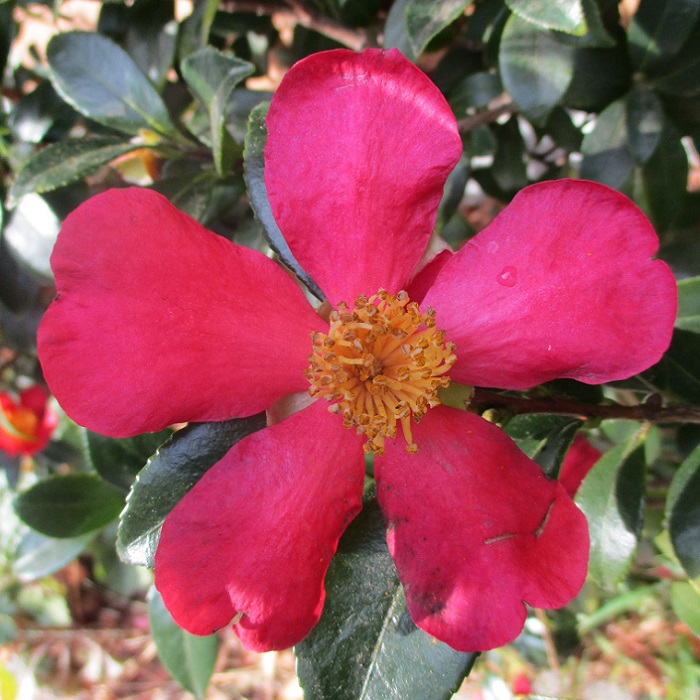UNITED STATES—Pavement serves a purpose in a landscape. So does decking. They are the flooring of the outdoor spaces that are used for outdoor living. Patios and decks are where we barbecue and dine. Walkways and porches are how we get around the exteriors of our homes. Driveways are where we park cars. For what they get used for, they are better than turf grass, ground cover or bare soil.
So why is it so trendy to clutter pavement and decking with potted plants that would really prefer to be in the ground? It would be more practical to pave less area, and leave more space to plant things in the ground. There would be no damp pots staining concrete or rotting decking. There would be less area to rake or blow, with fewer obstacles in the way. Watering would be much easier.
Well, as it turns out, there are a few plants that should be potted. Houseplants are the most obvious. After all, not many homes have exposed soil where houseplants can be grown on the inside. Even if they did, it is still easier to keep houseplants potted for portability. Plants such as orchids and Christmas cactus, can live in the garden most of the time, and then come in while blooming. Portability is also important for tropical plants that need protection from even mild frost. It might be easier to move them than to cover them.
There are also a few plants that are contained because they are invasive. Mint and horseradish are culinary plants that are so famously invasive that not many of us would bother growing them if they were not so much better fresh from the garden than purchased from elsewhere. Rather than allow them to escape, mint is popularly potted, and horseradish is commonly grown in deep tubs.
Container gardening and growing plants in pots is something that we do for our own convenience, or just because it looks good cluttering otherwise useful parts of the landscape. With only a few exceptions, plants prefer to be in the ground, where they can disperse their roots as extensively as they like. They are healthier, and need less attention. To them, container gardening is unnatural.
Highlight: sasanqua camellia
Some might say it blooms very late. Others might say it blooms very early. Regardless, sasanqua camellia, Camellia sasanqua, blooms in autumn or early winter when not much else is blooming. The abundant two-inch wide flowers can be pale pink, rich pink, white or red, all with prominent yellow stamens. Some are fluffy with many petals. Others have only a few. Alas, fragrance is rare.
Each cultivar of sasanqua camellia has a distinct personality. Some are strictly upright, and can eventually get somewhat higher than downstairs eaves. Others are too limber to stand upright on their own; so they grow as low mounds, or espaliered onto trellises. With proper pruning that does not compromise bloom too much, some can be pruned as hedges, or as foundations plantings.
Sasanqua camellia has been in cultivation for many centuries. Prior to breeding for bloom in the past few centuries, it was grown for tea and tea seed oil, which is extracted from the seeds. This oil is used for culinary purposes and cosmetics. The finely serrate elliptical ‘tea’ leaves are about one to two and a half inches long. The glossy evergreen foliage is appealing throughout the year.
Horticulturist Tony Tomeo can be contacted at tonytomeo.com.
UNITED STATES—Pavement serves a purpose in a landscape. So does decking. They are the flooring of the outdoor spaces that are used for outdoor living. Patios and decks are where we barbecue and dine. Walkways and porches are how we get around the exteriors of our homes. Driveways are where we park cars. For what they get used for, they are better than turf grass, ground cover or bare soil.
So why is it so trendy to clutter pavement and decking with potted plants that would really prefer to be in the ground? It would be more practical to pave less area, and leave more space to plant things in the ground. There would be no damp pots staining concrete or rotting decking. There would be less area to rake or blow, with fewer obstacles in the way. Watering would be much easier.
Well, as it turns out, there are a few plants that should be potted. Houseplants are the most obvious. After all, not many homes have exposed soil where houseplants can be grown on the inside. Even if they did, it is still easier to keep houseplants potted for portability. Plants such as orchids and Christmas cactus, can live in the garden most of the time, and then come in while blooming. Portability is also important for tropical plants that need protection from even mild frost. It might be easier to move them than to cover them.
There are also a few plants that are contained because they are invasive. Mint and horseradish are culinary plants that are so famously invasive that not many of us would bother growing them if they were not so much better fresh from the garden than purchased from elsewhere. Rather than allow them to escape, mint is popularly potted, and horseradish is commonly grown in deep tubs.
Container gardening and growing plants in pots is something that we do for our own convenience, or just because it looks good cluttering otherwise useful parts of the landscape. With only a few exceptions, plants prefer to be in the ground, where they can disperse their roots as extensively as they like. They are healthier, and need less attention. To them, container gardening is unnatural.
Highlight: sasanqua camellia
Some might say it blooms very late. Others might say it blooms very early. Regardless, sasanqua camellia, Camellia sasanqua, blooms in autumn or early winter when not much else is blooming. The abundant two-inch wide flowers can be pale pink, rich pink, white or red, all with prominent yellow stamens. Some are fluffy with many petals. Others have only a few. Alas, fragrance is rare.
Each cultivar of sasanqua camellia has a distinct personality. Some are strictly upright, and can eventually get somewhat higher than downstairs eaves. Others are too limber to stand upright on their own; so they grow as low mounds, or espaliered onto trellises. With proper pruning that does not compromise bloom too much, some can be pruned as hedges, or as foundations plantings.
Sasanqua camellia has been in cultivation for many centuries. Prior to breeding for bloom in the past few centuries, it was grown for tea and tea seed oil, which is extracted from the seeds. This oil is used for culinary purposes and cosmetics. The finely serrate elliptical ‘tea’ leaves are about one to two and a half inches long. The glossy evergreen foliage is appealing throughout the year.
Horticulturist Tony Tomeo can be contacted at tonytomeo.com.






